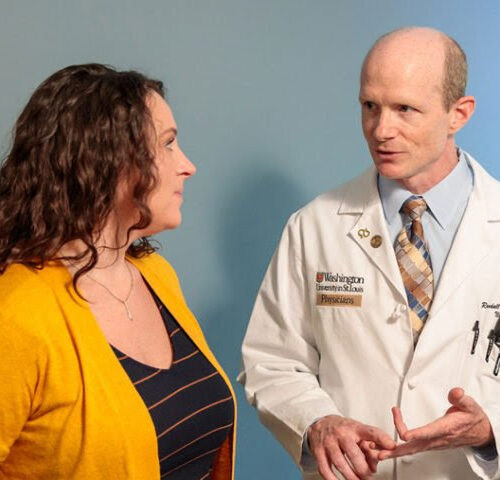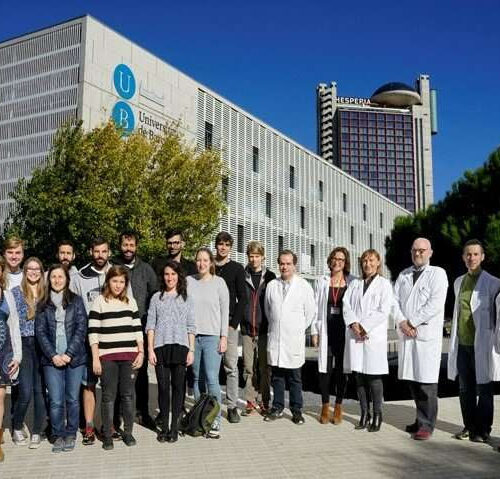By Nick Lavars A new study has shown how insulin resistance in diabetes could be tackled through experimental senolytic drugs that target zombie-like cellsUgreen/Depositphotos VIEW 1 IMAGES Zombie-like cells that have stopped dividing in the human body and accumulate as we age, known as senescent cells, continue to find themselves at the center of all kinds of...
Tag: <span>Drugs</span>
Why a drug used to treat critically ill COVID-19 patients may only benefit males
by Collene Ferguson, University of Calgary From left: Bryan Yipp, Sarthak Sinha, Jeff Biernaskie, and Nicole Rosin led the multidisciplinary study. Credit: Riley Brandt, University of Calgary A new study from the University of Calgary shows how dexamethasone, the main treatment for severe COVID-19 lung infections, alters how immune cells work, which may help male patients,...
International Alzheimer’s clinical trial to test two drugs in combination
Researchers leading a worldwide clinical trial aimed at finding treatments for Alzheimer’s disease are modifying an arm of the trial to evaluate a combination of drugs targeting two brain proteins: amyloid and tau. The trial – known as the Tau Next Generation Trial (Tau NexGen) – originally was announced with a focus on drugs that...
Why prescription drugs can work differently for different people
by C. Michael White, The Conversation Credit: Unsplash/CC0 Public Domain Different people taking the same drug can have markedly different responses to the same dose. While many people will get the intended effects, some may get little to no benefit, and others may get unwanted side effects. As a pharmacist who researches the safety and effectiveness of drugs, I know there are...
A tool to interrogate a new class of drugs
by Ecole Polytechnique Federale de Lausanne Fig. 1: Immunity-related genes and neutrophils are suppressed in zebrafish embryos following Keap1-specific hydroxynonenylation. a Differential expression from RNA sequencing of embryos subjected to Keap1-hydroxynonenylation by Z-REX. Statistically-significant differentially-expressed (SDE) Nrf2-driven AR genes marked with green dots; SDE immunity-related genes with red dots; all other SDE genes with blue dots;...
Type 2 diabetes drug trial uses patient experience to find their best drug
by University of Exeter Credit: CC0 Public Domain An innovative trial which invited people to take three drugs in turn, then choose their preferred option, has generated insights into which type 2 diabetes drug is best to prescribe to individuals. Led by the University of Exeter and funded by the Medical Research Council, the TriMaster trial presents today...
Light-activated drugs provide localized medicine without side effects
by University of Barcelona Team led by Professor Francisco Ciruela. Credit: UB-IDIBELL-UBNeuro Photopharmacology is an emerging area of science based on the development of photosensitive drugs, that is, drugs that activate with light. A team from IDIBELL and the University of Barcelona has worked on two treatments based on this innovative technology: a morphine derivative that...
Existing drug opens new possibilities for treating child leukemia
by Linköping University TET2 is a novel tumor suppressor in T-ALL. (A) Mutations in TETs and IDHs in primary human T-ALL from a meta-analysis of nine studies including 854 patients. (B) Known TET2 isoforms, TET2a (red) and TET2b (blue). (C) Expression of TET2 isoforms in 27 healthy tissues from the Human Protein Atlas. (D) Expression of...
FDA allows drugs without proven clinical benefit to languish for years on accelerated pathway
BMJ Since the US Food and Drug Administration (FDA) established its accelerated approval pathway for drugs in 1992, nearly half (112) of the 253 drugs authorized have not been confirmed as clinically effective, an investigation by The BMJ has found. Elisabeth Mahase, the clinical reporter at The BMJ, carried out an in-depth analysis of FDA...
Implantable piezoelectric polymer improves controlled release of drugs
A membrane made from threads of a polymer commonly used in vascular sutures can be loaded with therapeutic drugs and implanted in the body, where mechanical forces activate the polymer’s electric potential and slowly release the drugs. The novel system, developed by a group led by bioengineers at UC Riverside and published in ACS Applied Bio...









